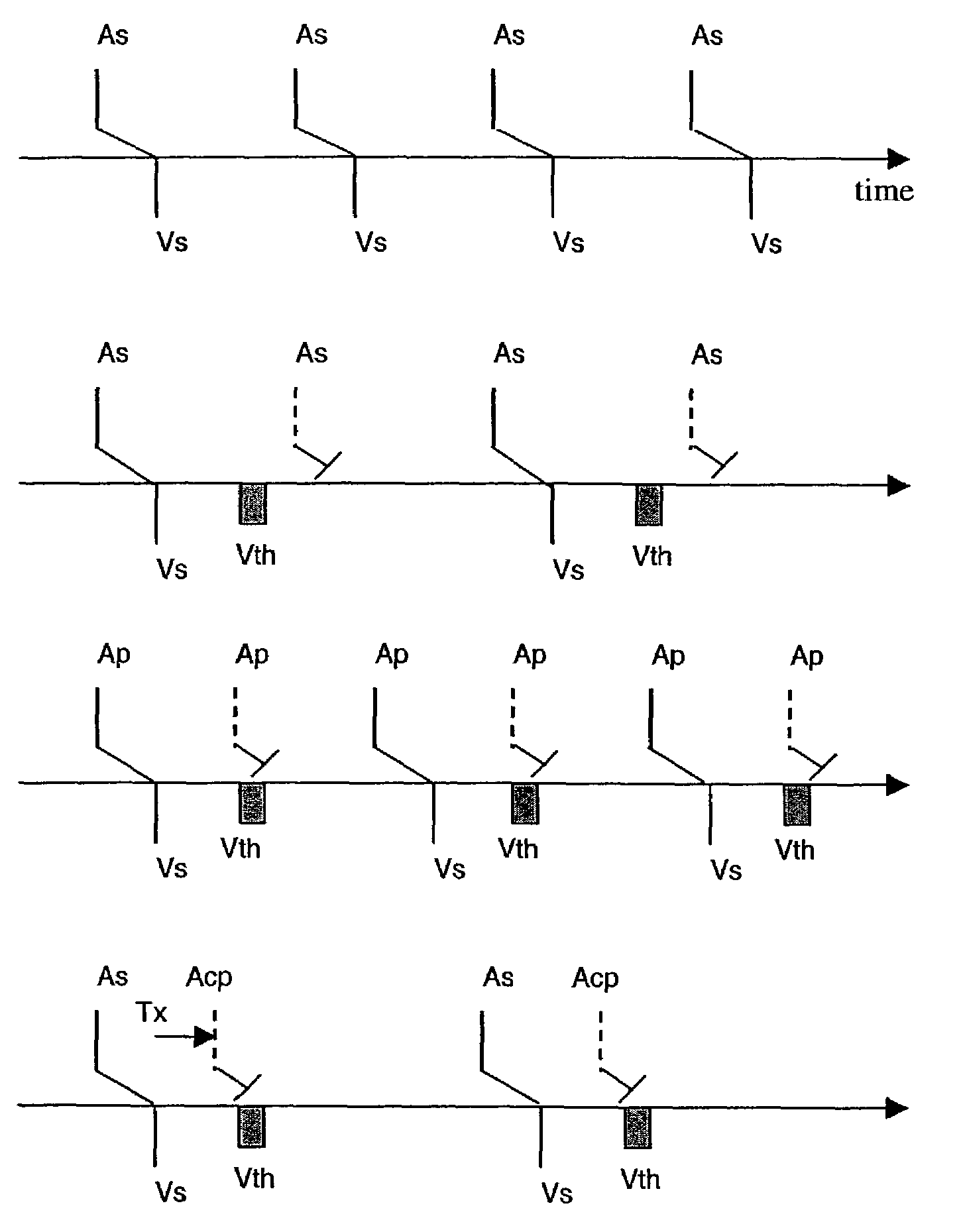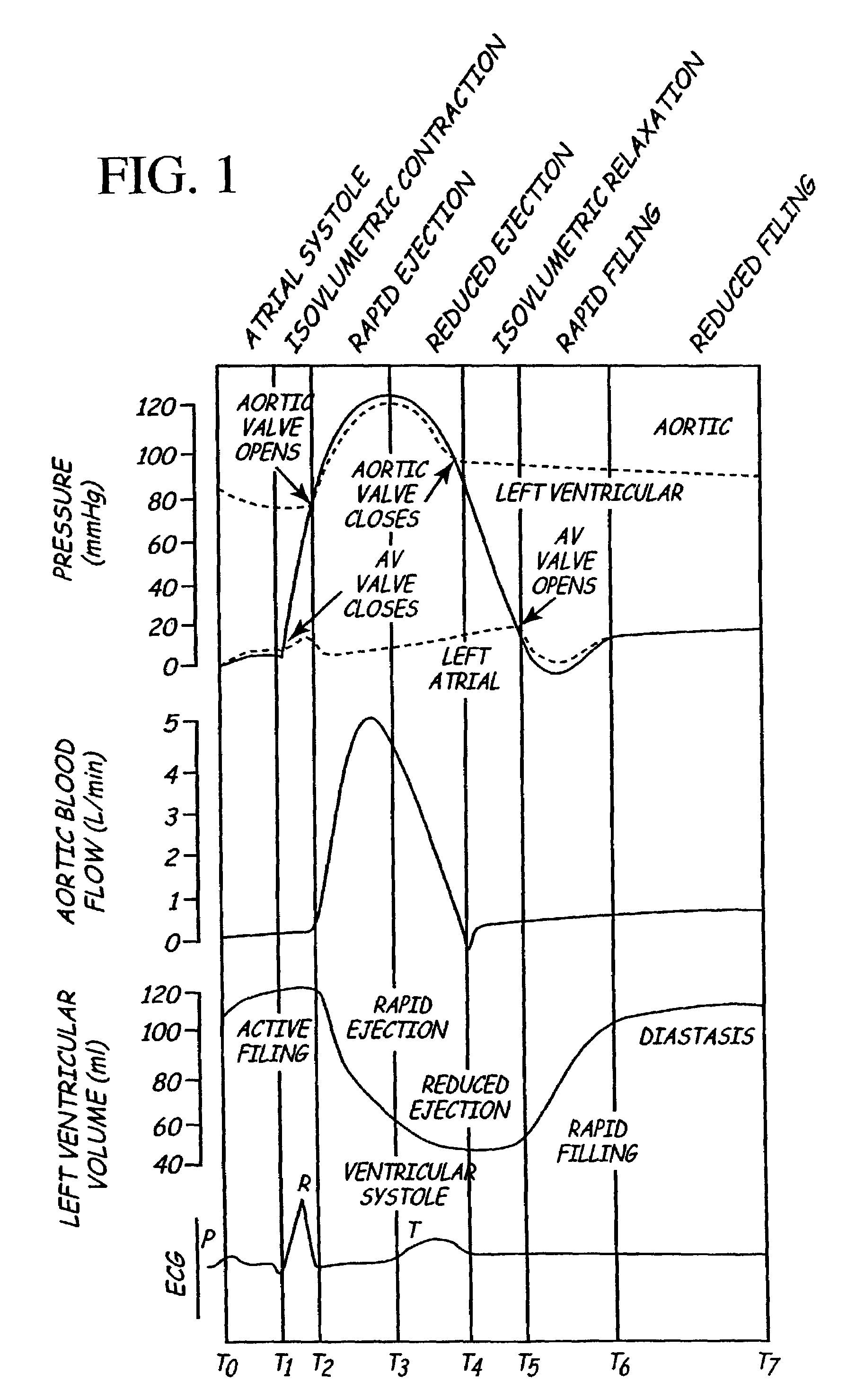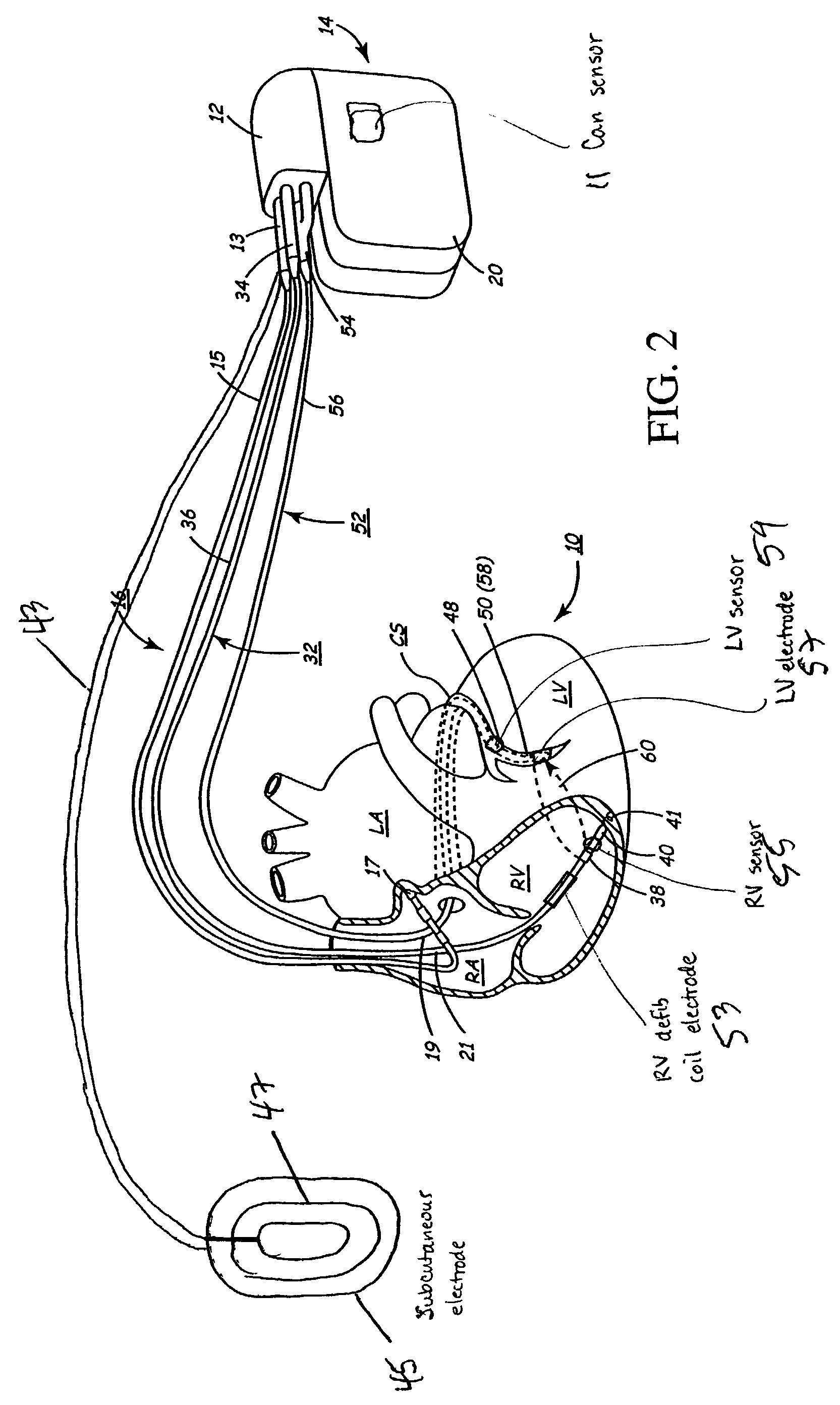Implantable medical device for treating cardiac mechanical dysfunction by electrical stimulation
a technology of electrical stimulation and medical devices, applied in the field of implantable medical devices, can solve the problems of slow response time, and achieve the effect of minimizing the potential risk of shock-induced myocardial damage and high detection specificity
- Summary
- Abstract
- Description
- Claims
- Application Information
AI Technical Summary
Benefits of technology
Problems solved by technology
Method used
Image
Examples
example 1
AED Example with Presentation of VF
[0238]Despite the increasing availability to quick access defibrillation by the public and quickening response times, the prognosis of a victim of a sudden cardiac arrest surviving to a hospital discharge is low, with many of these victims succumbing to electromechanical dissociation (EMD) or pulseless electrical activity (PEA). Current AED technology is equipped to treat tachyarrhythmias but has no means to treat EMD / PEA.
[0239]An AED equipped with the features detailed in this invention would address these scenarios. In an example implementation, the AED would appear identical to the first responder. The responder would place two transthoracic self-adhesive electrodes on the patient and depress a start button on the device. The AED would then obtain a surface ECG from the transthoracic electrodes and apply a VF detection algorithm to the signal. If VF was detected, the AED would apply a defibrillation shock and then apply a re-detection algorithm....
example 2
ICD Example with Presentation of VT
[0241]ICD systems provides patients with greatly improved survivability from episodes of sudden cardiac arrest when compared to patients treated with AED's mainly because there is minimal time to wait between the onset of the arrhythmia and delivery of therapy when the device is implanted and always ready to detect events. However, some patients, especially those with more pronounced HF, may not tolerate well even the shortest of VF episodes and may have depressed cardiac function long after the arrhythmia is terminated. Additionally, circumstances may arise that lengthen the duration of the tachyarrhythmia before the device delivers a therapy. Some tachyarrhythmias pose detection problems for ICD's, which may postpone delivery of therapy. An arrhythmia could also require several shocks to terminate, further prolonging the episode.
[0242]During a tachyarrhythmia, the coronary blood flow perfusing the heart can become severely impaired, leading to is...
example 3
HF Example with Presentation of Acute Decompensation
[0244]Advanced stage HF patients experience sudden worsening of heart failure associated symptoms which require hospitalization. The transition from chronic compensated HF to acute decompensated HF may result from a number of factors including dietary indiscretion, progress of HF disease, and acute myocardial infarction. When severe, symptoms may progress in a few hours to a stage where these patients need to be admitted to a critical care hospital bed, monitored by physiologic sensors, and treated with a variety of drugs including intravenous inotropes. A patient experiencing such a decompensation commonly exhibits low cardiac output at rest, poor contractile function and low dP / dt max, slow relaxation and high tau, elevated diastolic ventricular pressures, and reduced ventricular developed pressures.
[0245]Cardiac resynchronization therapy delivered by an implanted device is an important adjunct to good medical therapy. Such a res...
PUM
 Login to View More
Login to View More Abstract
Description
Claims
Application Information
 Login to View More
Login to View More - R&D
- Intellectual Property
- Life Sciences
- Materials
- Tech Scout
- Unparalleled Data Quality
- Higher Quality Content
- 60% Fewer Hallucinations
Browse by: Latest US Patents, China's latest patents, Technical Efficacy Thesaurus, Application Domain, Technology Topic, Popular Technical Reports.
© 2025 PatSnap. All rights reserved.Legal|Privacy policy|Modern Slavery Act Transparency Statement|Sitemap|About US| Contact US: help@patsnap.com



